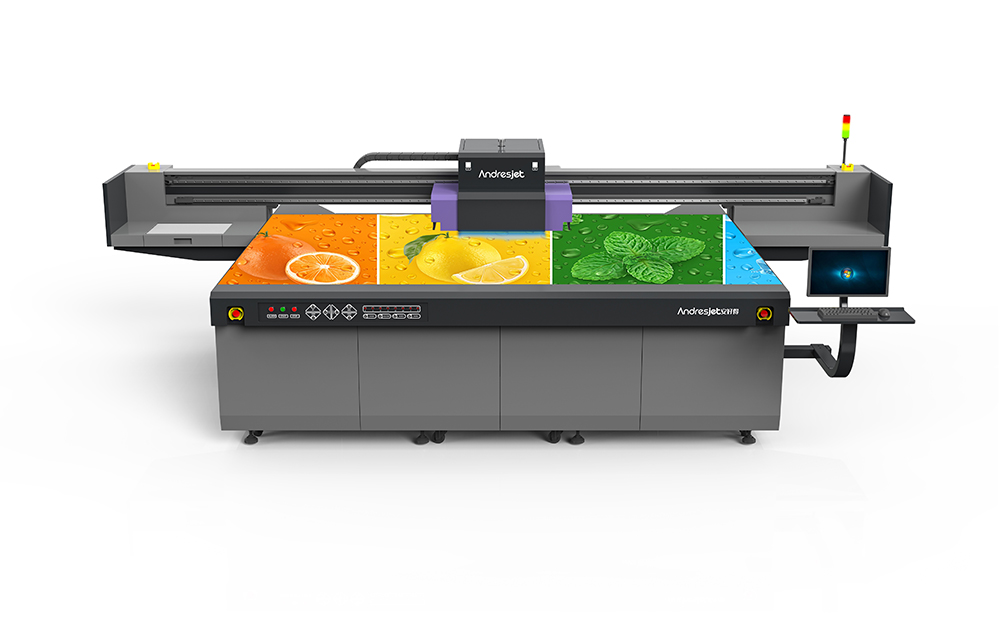UV Flatbed Printer: The Role of Ink Type in Print Quality
UV Flatbed Printer: The Role of Ink Type in Print Quality
In the realm of digital printing, UV flatbed printers have emerged as a versatile and efficient technology, offering high-quality prints on a wide range of materials. These printers utilize ultraviolet (UV) light to cure ink instantly, resulting in durable and vibrant prints. One crucial aspect that significantly influences the print quality of UV flatbed printers is the type of ink used. This article delves into the role of ink type in determining the overall print quality achieved by UV flatbed printers, exploring various ink types, their characteristics, and their impact on the final output.

Understanding UV Flatbed Printers
UV flatbed printers are designed to print directly onto flat surfaces or substrates, making them ideal for applications such as signage, packaging, promotional materials, and even industrial parts. The key advantage of these printers lies in their ability to cure ink instantly using UV light. This process not only accelerates production but also enhances the durability and quality of the prints by preventing smudging, bleeding, or fading.
The Importance of Ink Type
Ink is a fundamental component in any printing process, and its quality directly affects the final print outcome. In UV flatbed printing, the choice of ink is particularly critical due to the unique curing mechanism. The ink must be compatible with UV light, allowing it to cure rapidly and effectively. Moreover, the ink’s composition plays a pivotal role in determining factors such as color accuracy, adhesion, durability, and even the printer’s maintenance requirements.
Types of UV Inks
UV inks can be broadly classified into several types, each with its own set of characteristics and applications:
UV-Curable Solvent Inks: These inks contain solvents that help in the dispersion of pigments or dyes. They offer excellent adhesion to various substrates and are known for their vibrant colors and high opacity. However, they may require specific handling and ventilation due to the solvent content.
UV-Curable Water-Based Inks: As a more environmentally friendly option, water-based UV inks have gained popularity. They are low in volatile organic compounds (VOCs) and offer good adhesion and color saturation. They are suitable for printing on sensitive materials that might be damaged by solvent-based inks.
UV-Curable Gel Inks: Gel inks provide a middle ground between solvent and water-based inks, offering good adhesion and color intensity while minimizing the need for harsh solvents. They are versatile and can be used on a wide array of materials.
UV-LED Inks: Specifically designed for use with UV-LED curing systems, these inks cure at lower temperatures, making them suitable for heat-sensitive materials. They offer excellent durability and are environmentally friendly.
Impact on Print Quality
The choice of ink type significantly influences several aspects of print quality:
Color Accuracy and Vibrancy: The pigment or dye composition of the ink determines its color accuracy and intensity. High-quality inks with pure pigments ensure vibrant and consistent colors across prints.
Adhesion and Durability: The ink’s ability to bond with the substrate is crucial for long-lasting prints. UV inks are formulated to adhere strongly to various surfaces, preventing cracking, peeling, or fading over time.
Resolution and Detail: The viscosity and flow properties of the ink affect the printer’s ability to produce fine details and high resolutions. Inks optimized for UV flatbed printers allow for precise dot placement, resulting in sharp images.
Curing Efficiency: The curing speed and effectiveness of the ink directly impact production efficiency and print quality. Inks that cure rapidly and uniformly under UV light enable faster turnaround times and reduce the risk of ink smearing or bleeding.
Flexibility and Versatility: Different ink types offer varying levels of flexibility and compatibility with different substrates. Choosing the right ink ensures optimal print quality on a wide range of materials.
Considerations for Ink Selection
Selecting the appropriate ink type for a UV flatbed printer involves considering several factors:
Substrate Compatibility: The ink must be compatible with the material being printed on to ensure proper adhesion and durability.
Environmental Impact: The choice of ink can significantly affect the printer’s environmental footprint. Water-based and UV-LED inks are more eco-friendly options.
Print Application: The intended use of the printed material influences ink selection. For outdoor applications, inks with high weather resistance are essential.
Cost and Maintenance: Ink costs and the printer’s maintenance requirements should also be factored into the decision-making process.
Conclusion
In the realm of UV flatbed printing, the type of ink used is a critical determinant of print quality. From color accuracy and adhesion to resolution and curing efficiency, the ink’s composition and properties play a pivotal role in achieving high-quality prints. Understanding the characteristics of different UV ink types and their impact on print quality enables printers to make informed decisions that align with their specific application requirements, substrate compatibility, and environmental considerations. By selecting the appropriate ink, UV flatbed printers can deliver vibrant, durable, and high-resolution prints that meet the demands of a wide range of industries and applications.
